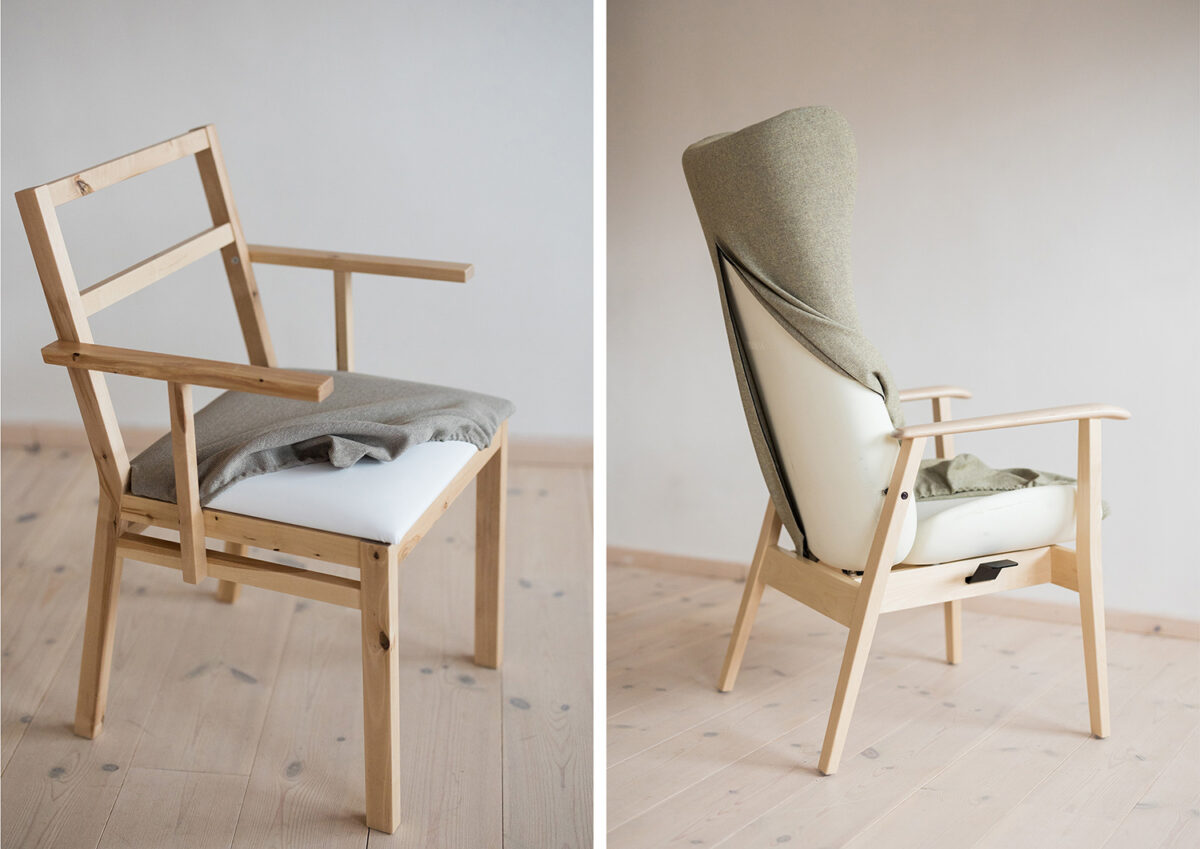Materials / Care advice
By taking care of your furniture the right way, they stay in good condition longer and are given all the conditions for a long life. This saves both money and nature's resources, so take good care of them.

Wood
Wood is a living material whose grain from the very beginning has a natural variation in pattern, color tone and luster. The wood is affected by, among other things, the season, heat and humidity. That wood is a living material means:
Screws need to be re-tightened regularly, at least once a year.
Solid table tops can naturally warp by up to 0.5%.
Light from the sun and lighting can cause permanent color and light differences in the surface, so allow the entire wooden surface to be exposed to the same amount of light.
Out of concern for the environment, we lacquers a large part of our range with water-based surface treatments
Detta innebär:
Spills of coffee and other liquids need to be wiped up immediately.
For cleaning, hand washing detergent or pH-neutral detergents and lukewarm water are recommended. Wipe off with clean water and wipe dry. Do not use cleaning agents that are alkaline, aggressive, contain abrasives or solvents.
For disinfection, non-alcohol-based agents are recommended, e.g. Virkon or DAX Alco Free. Alcohol-based agents must not be used.
Laminate
Laminates are very durable surfaces that fit well in public environments.
Daily cleaning with a dry cloth.
For more difficult stains, non-abrasive cleaners can be used.
Hardly ingrained stains or discolorations can usually be removed by carefully using a cleaning agent with a mild abrasive action.
Rings and streaks that form on the surface are most easily removed with window cleaner.
Do not use scouring pads or steel wool as this will cause scratches.
Marker and ink marks can be removed with e.g. acetone or alcohol on a clean cloth.
Disinfection can be done with alcohol if the surface is dried afterwards.
Fabric
Removable and washable fabrics are washed according to washing instructions. These are sewn with a shrink seam, wash before use for optimal fit.
Vacuuming with a soft nozzle is often sufficient for cleaning.
Stains should always be removed as quickly as possible. In most cases, wiping with a damp cloth is sufficient, for more difficult stains, a pH-neutral detergent or a foam detergent for professional use can be used.
Always use white cloths and avoid wetting a woolen fabric to a greater extent, as this risks remaining stains.
If necessary, a foam detergent can also be used for a more thorough cleaning if this is allowed in the fabric's specification.
Leather
If you take care of the leather in the right way, it will become more beautiful over the years.
Leather is heat sensitive. Therefore, direct sunlight and close contact with heating elements should be avoided.
Vacuum the furniture to remove loose dirt and dust.
Wipe the leather with a slightly damp cloth and a mild soapy solution can be used for cleaning.
Water-based leather care products extend the lifespan.
Metal
For regular cleaning, use a lightly moistened cloth with a mild detergent without solvents or abrasives.
For heavily soiled surfaces, a cloth moistened with alcohol can be used.
Disinfection can be done with alcohol if the surface is dried afterwards.
Plastic
For wiping, use a mild detergent without solvents or abrasives. Regular dish soap works well.
Glass
Cleaned with window cleaner or washing-up liquid diluted in water.